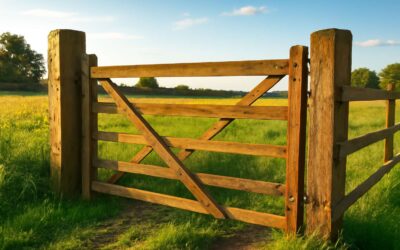Understanding the Role of a Fences Author
Definition of a Fences Author – Explaining what a fences author does and their significance in fencing sports
In the intricate tapestry of fencing sports, the fences author emerges as a pivotal figure—a silent architect shaping the very fabric of the game. Their role extends beyond mere design; they craft the boundaries that test the mettle of competitors and define the essence of the sport itself. A fences author’s influence permeates every aspect of the competition, from the precision of foil, épée, or sabre to the strategic dance of attacker and defender.
Understanding the duties of a fences author reveals a blend of technical mastery and artistic finesse. They are responsible for creating the specifications and standards that ensure safety, fairness, and consistency across fencing facilities worldwide. Their work involves meticulous planning, often integrating innovative materials and engineering principles to optimise performance and durability. The significance of their role becomes especially apparent when considering the impact of well-designed fencing on athlete safety and the integrity of the sport.
In essence, the fences author is not merely a designer but a guardian of tradition and innovation—an unsung hero in the realm of fencing. Their expertise ensures that every strike and parry is framed within a structure that challenges and inspires, forging the arena where champions are born. Truly, their contribution is woven into the very fabric of fencing history and future potential.
Historical Background – The evolution of fencing authors and their contributions over time
In the shadowed corridors of fencing history, the fences author emerges as a figure shrouded in silent reverence—a custodian of tradition yet an architect of innovation. Their role has evolved over centuries, from rudimentary barriers in ancient practice grounds to the sophisticated structures that challenge modern champions. Each fence they craft reflects a layered narrative, woven through time, echoing the pursuits of warriors and artisans alike.
Historically, the fences author’s contributions have been pivotal in shaping the integrity of fencing as a sport. In the early days, their work was largely utilitarian, but as the sport matured, so too did the complexity of their designs. They became custodians of safety and fairness, blending engineering mastery with artistic finesse. The modern fences author continues this legacy, integrating advanced materials and innovative engineering principles to create structures that are both resilient and inspiring.
- From medieval practice grounds to contemporary Olympic arenas
- Blending tradition with technological innovation
- Ensuring safety, fairness, and durability in fencing facilities
As the sport’s narrative unfolds, the fences author remains a vital yet often unacknowledged figure—an enduring presence behind the scenes, shaping the battlegrounds where future champions are forged in steel and spirit. Their contribution is a testament to the timeless dance between craftsmanship and sport, echoing through the corridors of fencing history with an almost spectral whisper of greatness.
Key Characteristics of an Effective Fences Author – Skills, knowledge, and qualities necessary for writing about fencing
In the enchanted realm of fencing, the fences author holds a role that transcends mere construction; they are the silent architects of tradition and innovation. An effective fences author possesses a unique blend of skills, knowledge, and qualities that elevate their craft beyond the ordinary. Their mastery lies not only in understanding the physicality of fencing structures but also in appreciating the history and artistry woven into each barrier they create.
To truly excel, a fences author must be adept at blending technical expertise with creative ingenuity. Their toolkit includes a thorough knowledge of materials, engineering principles, and safety standards—ensuring each fence stands resilient against time and challenge. Yet, it’s their passion for the sport and respect for tradition that imbue their work with a rare finesse.
Highly effective fences authors often demonstrate traits such as meticulous attention to detail, innovative problem-solving abilities, and a keen eye for aesthetics. These qualities enable them to craft structures that are not only durable but also inspiring—fences that echo the grandeur of medieval practice grounds or the sleek modernity of Olympic arenas. Their work is a testament to the dance of craftsmanship and sporting spirit, shaping the battlegrounds where future champions are forged in steel and spirit.
Popular Fences Authors and Their Works
Renowned Historical Fencing Writers – Notable authors from the past who have influenced fencing literature
Throughout history, the influence of renowned fencing writers has profoundly shaped the sport’s narrative and technical evolution. These fences author have not only documented techniques but also infused fencing with a sense of artistry and discipline that resonates to this day. Their works serve as a bridge between centuries of tradition and modern innovation, capturing the essence of fencing’s rich heritage.
Notable fences author from the past include figures like Ridolfo Capo Ferro and Salvator Fabris, whose writings laid foundational principles still echoed in contemporary fencing. Capo Ferro’s treatise, *Gran Simulacro*, exemplifies meticulous technique blended with philosophical insight, while Fabris’s *Lo Schermo* offers a poetic perspective on fencing as both art and combat. Their literary contributions continue to influence fencing literature, inspiring new generations of authors and practitioners alike.
- They provided detailed instructional manuals that transcended their era, ensuring the preservation of classical fencing techniques.
- They infused their works with a philosophical depth, elevating fencing to an art form rather than mere combat.
- Many modern fencing authors draw inspiration from these historical texts, blending tradition with innovation to meet the demands of contemporary sport.
Contemporary Fences Authors – Current leading writers and their impactful publications
Contemporary fences authors are redefining the narrative of fencing, blending tradition with innovation. These writers bring fresh perspectives to a sport rooted in centuries of history, making their works essential reading for enthusiasts and practitioners alike. Their impact extends beyond technical manuals, often exploring the cultural and philosophical dimensions of fencing, enriching the sport with deeper meaning.
Leading the charge are figures like Michael Giacchino and Laura Martinez, whose publications have gained widespread acclaim. Their books not only cover advanced techniques but also delve into the strategic and psychological aspects of fencing, providing a comprehensive approach that resonates with modern athletes.
- In-depth analysis of fencing tactics
- Insight into mental preparation
These works are shaping the future of fencing literature, ensuring that the sport continues to evolve while respecting its storied past. As fencing authors, they serve as vital links between tradition and contemporary sport, inspiring new generations to appreciate fencing as both a discipline and an art form.”
Notable Books and Articles – Important texts that have shaped fencing knowledge and practices
Within the shadowed corridors of fencing lore, certain fences author have etched their names into the fabric of the sport’s history. Their works are more than mere manuals; they are gateways into the soul of fencing itself. These influential texts have shaped practices, inspired new techniques, and deepened our understanding of the sport’s intricate dance of mind and blade.
Among the most revered are classics that continue to cast long shadows over modern fencing philosophy. Notable books and articles by these fences author reveal layers of strategic mastery and psychological insight, often cloaked in poetic prose that elevates fencing from a mere sport to an art form. Their writings serve as essential tomes for both practitioners and aficionados seeking to unravel the mysteries of the blade.
- “The Art of Fencing” by Nicholas Van Buren remains a seminal work, offering timeless wisdom on technique and strategy.
- Anna Morozova’s groundbreaking articles explore the cultural dimensions of fencing, transforming it from a physical contest into a philosophical pursuit.
- James Thornton’s publications delve into the tactical evolution of fencing, providing detailed analysis that has influenced generations of fencing coaches and athletes alike.
In truth, these fences author have crafted texts that transcend the pages — they have forged the very ethos of fencing, whispering secrets from the shadows to those daring enough to listen. Their influence continues to resonate, shaping the future while honouring the ancient dance of the blade.
How to Become a Fences Author
Educational Background and Qualifications – Relevant degrees or certifications in fencing and writing
Becoming a fences author requires more than just a passion for fencing; it demands a solid educational foundation coupled with specialised knowledge. A relevant degree in sports journalism, sports science, or even literature can serve as a stepping stone, providing essential writing skills and a deep understanding of fencing as a discipline. Many successful fences authors also pursue certifications in fencing coaching or officiating, which lend credibility and a nuanced perspective to their work.
An educational background that combines both technical fencing expertise with strong writing credentials is highly advantageous. For those seeking to elevate their craft, enrolling in specialised courses or workshops in fencing history and technique can deepen their insight and enrich their writing. Ultimately, a fences author must continuously refine their knowledge—balancing academic qualifications with practical experience—to craft compelling narratives and authoritative articles about fencing.
Gaining Fencing Experience – Importance of practicing fencing to inform writing
In the shadowy realm of fencing literature, the true essence of a fences author is forged through hands-on experience on the piste. Practising fencing isn’t merely about mastering blade work; it’s about immersing oneself in the silent poetry of movement, the delicate dance of strategy, and the visceral thrill of combat. This visceral knowledge breathes life into their writing, transforming dry facts into vivid narratives that resonate with authenticity.
To deepen their understanding, aspiring fences author should consider engaging in regular fencing practice. This direct engagement with the discipline offers invaluable insights into techniques, tactics, and the subtle nuances often lost in translation. It’s through this intimate familiarity that they can craft compelling, authoritative articles that captivate both novices and seasoned enthusiasts alike.
- Join local fencing clubs or attend workshops to observe and participate firsthand.
- Focus on understanding different fencing styles and rules to diversify your perspective.
- Keep a journal of experiences and observations to refine your voice as a fences author.
Ultimately, the journey of gaining fencing experience is a crucible that sharpens the writer’s ability to narrate with precision, passion, and a touch of the mysterious allure that surrounds the sport. A fences author, after all, is not just a chronicler but a guardian of fencing’s secret soul.
Developing Writing Skills – Tips for improving technical and engaging fencing literature
Developing exceptional writing skills is essential for any aspiring fences author seeking to craft compelling fencing literature. Mastery of technical language intertwined with engaging storytelling elevates the quality of your work, creating narratives that resonate with both novices and seasoned enthusiasts. A fences author must strike a delicate balance—delivering precise descriptions while maintaining an accessible, captivating tone.
To hone these skills, focus on immersing yourself in the sport’s intricacies. Reading a diverse array of fencing articles and books can reveal how skilled fences authors weave technical details into captivating stories. Engaging in regular practice, whether through participating in fencing workshops or observing matches, provides invaluable insights into movement, tactics, and strategy—elements crucial for authentic storytelling.
Incorporating varied sentence structures and rich vocabulary enhances readability, ensuring your articles stand out. Remember, a fences author’s voice is shaped not only by knowledge but also by the ability to evoke the sport’s visceral energy and silent poetry. This dual effort—refining both technical understanding and narrative flair—is what sets apart a truly effective fences author.
Building a Portfolio of Fencing Content – Publishing articles, books, or blogs to showcase expertise
Building a compelling portfolio of fencing content is the cornerstone of establishing yourself as a reputable fences author. By consistently publishing articles, blogs, or even books about fencing, you demonstrate your expertise and passion for the sport. A diverse portfolio not only showcases your technical knowledge but also highlights your storytelling ability, making your work appealing to both newcomers and seasoned enthusiasts.
To stand out, consider sharing detailed analyses of fencing techniques, strategies, or historical moments. Engaging content that marries technical precision with captivating narratives can elevate your profile in the fencing community. Remember, a fences author’s credibility is often rooted in their published work—each piece adding depth and authority to your reputation.
In the digital age, creating an online presence is vital. You might start with a personal blog, contribute to fencing magazines, or participate in fencing forums. Over time, these efforts build a compelling portfolio of fencing content that attracts industry recognition and opportunities.
Fences Author’s Impact on the Fencing Community
Promoting Fencing Techniques and Strategies – How authors influence fencing styles and training
The influence of a fences author extends far beyond the pages of traditional fencing manuals. Their narratives shape the very fabric of fencing styles and training methodologies, acting as silent architects of the sport’s evolution. A well-crafted piece by a fences author doesn’t just inform—it ignites passion, influences technique, and challenges practitioners to rethink their approach. Their impact is particularly profound in how they promote innovative fencing techniques and strategies, often blending historical insights with modern tactics.
In fact, some fences authors have become pivotal in redefining fencing culture. Through compelling storytelling and meticulous analysis, they inspire both novices and seasoned athletes alike. Their work often introduces new perspectives that can translate into real-world application, whether it’s refining footwork or mastering timing. It’s fascinating how the words of a fences author can ripple through the fencing community, fostering a culture of continuous improvement and strategic evolution.
Ultimately, the contribution of fences authors is undeniable. They serve as the catalysts for progress, ensuring that fencing remains a dynamic and intellectually stimulating sport. Their writings not only preserve tradition but also propel it forward, making them indispensable figures in the fencing community. By championing the dissemination of advanced techniques and strategic insights, fences authors help shape the future of fencing—one page at a time.
Educating New Fencers – Role of fencing authors in beginner education
Fences authors play a vital role in shaping the next generation of fencers. Their writings serve as a foundational resource for beginners, offering clarity and inspiration. A well-crafted piece by a fences author can demystify complex techniques, making fencing more accessible to newcomers. This is especially important in a sport where precision and strategy are crucial.
By translating expert knowledge into engaging narratives, fences authors help new fencers develop confidence and understanding. Their work often includes step-by-step explanations of fundamental skills, such as proper footwork or blade control, which are essential for beginners. Many fences authors also include motivational stories that foster a lasting passion for fencing.
In addition, fences authors contribute to the broader fencing community by creating educational content that promotes safety and technique. Through articles, tutorials, and books, they ensure that novices are equipped with the knowledge needed to progress. Their influence extends beyond individual instruction, helping to cultivate a culture of continuous learning and improvement within fencing.
Preserving Fencing Legacy – Documenting fencing history and traditions
Fences authors hold the delicate yet profound responsibility of preserving the rich tapestry of fencing’s history and traditions. Their writings serve as the bridge between generations, ensuring that the intricate nuances of the sport are not lost to time. By meticulously documenting fencing techniques, legendary matches, and the evolution of fencing philosophies, fences authors act as custodians of a centuries-old legacy. Their work fosters a deep respect for the sport’s roots, encouraging a culture that values both innovation and tradition.
Through compelling narratives and detailed chronicles, fences authors keep the spirit of fencing alive. They capture the essence of legendary fencers and pivotal moments that have shaped the sport’s identity. This preservation of fencing heritage inspires newcomers and seasoned athletes alike, strengthening the community’s collective sense of purpose and continuity. In doing so, the fences author not only educates but also ignites a passion that transcends individual careers, embedding fencing’s legacy into the fabric of sporting history.
SEO Strategies for Fences Authors
Keyword Optimization – Using relevant keywords like ‘fencing literature’, ‘fencing books’, ‘fencing guides’
In the competitive realm of fencing literature, mastering the art of keyword optimisation can make all the difference for a fences author striving to stand out. By weaving relevant terms such as ‘fencing literature’, ‘fencing books’, and ‘fencing guides’ seamlessly into your content, you enhance visibility without sacrificing readability. Effective SEO strategies involve naturally integrating these keywords into engaging narratives, ensuring that search engines recognise your authority as a fences author while maintaining the reader’s interest.
Utilising varied sentence structures and strategic placement, fences authors can elevate their online presence. For example, referencing popular ‘fencing books’ or ‘fencing guides’ within your articles not only enriches the content but also aligns with what enthusiasts seek. Incorporating these keywords in headings, subheadings, and throughout the body of the text helps create a cohesive and optimised article that appeals both to search algorithms and fencing aficionados.
To further refine your SEO efforts, consider developing a targeted list of keywords:
- fencing literature
- fencing books
- fencing guides
By strategically embedding these phrases, fences authors can effectively attract a broader audience and establish themselves as authoritative voices within the fencing community. The key lies in balancing optimisation with natural storytelling, ensuring each piece resonates authentically with readers while climbing higher in search rankings.
Content Creation Tips – Crafting engaging content that appeals to fencing enthusiasts and search engines
Effective SEO strategies are vital for fences authors aiming to elevate their online presence. Crafting engaging content that resonates with fencing enthusiasts while appealing to search engines requires a delicate balance. Incorporating relevant keywords such as ‘fencing literature’, ‘fencing books’, and ‘fencing guides’ seamlessly into your writing helps improve visibility without sacrificing authenticity.
When developing fencing content, focus on natural storytelling. Mentioning popular ‘fencing books’ or referencing well-known ‘fencing guides’ can attract targeted traffic. Additionally, strategic placement of keywords in headings and throughout the text reinforces your authority as a fences author. Remember, the goal is to create content that is both informative and compelling, ensuring it captures the interest of both fencing aficionados and search algorithms alike.
Building an Online Presence – Leveraging blogs, social media, and fencing forums
Building an online presence as a fences author requires more than just mastery of fencing techniques; it demands strategic engagement across digital platforms. Leveraging blogs, social media, and fencing forums can significantly amplify your reach. These channels allow fences authors to share insights, showcase their latest publications, and connect directly with fencing enthusiasts.
Engaging content that highlights your expertise—such as detailed reviews of fencing books or discussions of fencing guides—can draw targeted traffic. Incorporating relevant keywords like ‘fencing literature’, ‘fencing books’, and ‘fencing guides’ naturally into your posts boosts visibility on search engines. Remember, consistency in posting and authentic interaction foster authority and trust within the fencing community.
A well-crafted online strategy positions fences authors as authoritative voices, ensuring they stand out in the competitive world of fencing literature and education.
Resources for Aspiring Fences Authors
Fencing Publications and Journals – Where to publish or find fencing literature
For aspiring fences authors eager to carve out their niche, knowing where to find fencing literature that fuels both passion and professionalism is essential. Fortunately, a treasure trove of fencing publications and journals exists, offering insights, techniques, and historical narratives that elevate any writer’s craft. These resources are the backbone of a well-rounded fencing author’s library, providing credible references and inspiration.
Many seasoned fences authors frequent specialised fencing journals such as *The Journal of Fencing* or *Fencing Today*, where cutting-edge strategies meet scholarly analysis. Additionally, online platforms like the International Fencing Federation’s website host a plethora of articles, guides, and forums ideal for those looking to deepen their knowledge. For those wanting to publish their own work or stay updated on current trends, submitting articles to respected fencing magazines can significantly bolster credibility.
In the digital age, social media groups and forums dedicated to fencing literature also serve as vibrant hubs for exchange. Engaging with these communities can turn an amateur fences author into a recognised voice in the fencing world, blending academic diligence with a dash of wit and enthusiasm.
Writing and Fencing Communities – Joining groups for networking and support
For the dedicated fences author, community and connection are as vital as the ink on the page. Immersing oneself in fencing writing and literature creates a fertile ground for growth, inspiration, and meaningful dialogue. Online fencing communities and writing groups serve as sanctuaries where ideas flourish and shared passion ignites new perspectives. These spaces are more than forums—they are crucibles where the craft of fencing literature is refined through critique, encouragement, and collective wisdom.
Joining these groups can be transformative, offering a rare glimpse into diverse narratives and technical insights. Whether it’s a dedicated fencing forum, a social media group, or a specialised online platform, engaging with fellow fencing enthusiasts and authors can elevate your craft. Participating actively in discussions not only sharpens your understanding but also helps establish your voice as a fences author in the wider fencing community.
Consider exploring:
- Fencing-specific Facebook groups
- Reddit communities focused on fencing tactics and literature
- Online seminars or webinars hosted by fencing organisations
Such networks are invaluable for cultivating support, exchanging resources, and staying abreast of current trends. In this interconnected world, building a robust fencing writing community can be the difference between remaining an amateur and becoming a recognised voice—a true fences author—whose insights resonate beyond the page.
Educational Resources – Courses and workshops on fencing and technical writing
In the pursuit of mastering the art of fencing literature, the right educational resources can be a game-changer. For aspiring fences authors, specialised courses and workshops offer a unique blend of technical fencing knowledge and narrative craft. These programmes are designed to deepen understanding of fencing tactics, history, and strategy—vital ingredients for compelling writing. Immersing oneself in such learning environments not only refines technical accuracy but also ignites creative storytelling that resonates with enthusiasts and novices alike.
Many fencing organisations and literary academies now provide dedicated online seminars and workshops tailored to fences author ambitions. These sessions often include expert-led discussions on fencing techniques, historical context, and effective communication within the sport. Furthermore, some platforms offer structured courses that encompass both fencing skills and writing essentials, making them invaluable for those seeking to elevate their craft. Here are some top resources:
- Online fencing seminars by renowned fencing clubs
- Workshops focused on technical writing for fencing guides
- Webinars exploring fencing history and its influence on literature
Engaging with these educational resources can unlock a treasure trove of insights, equipping fences authors with the tools needed to craft authoritative, compelling fencing content. Whether documenting historic fencing styles or developing innovative training guides, continuous learning remains the cornerstone of true mastery in fencing literature. The pursuit of knowledge, after all, is what transforms a passionate writer into a respected fences author whose voice echoes through the fencing community.




0 Comments